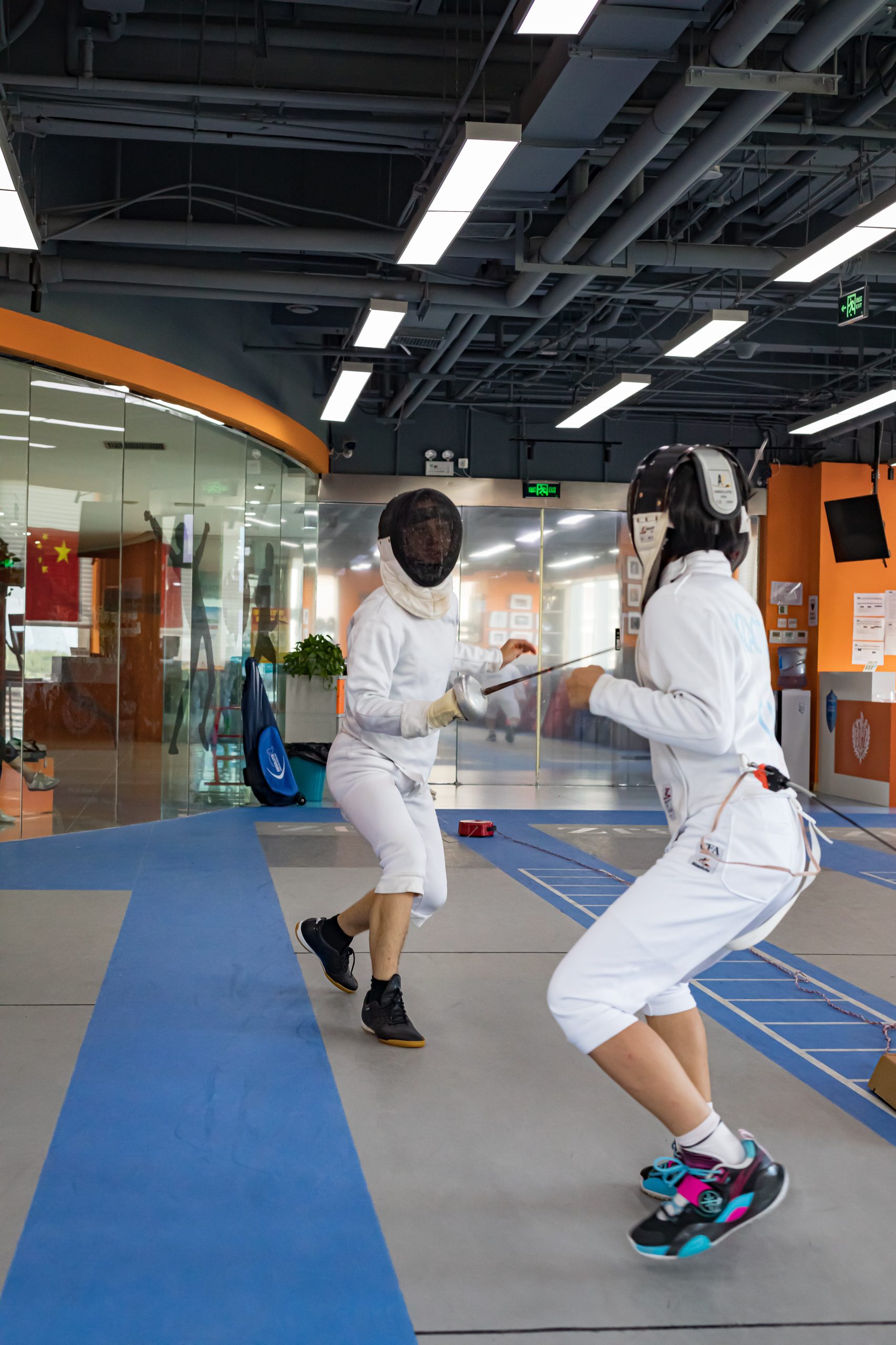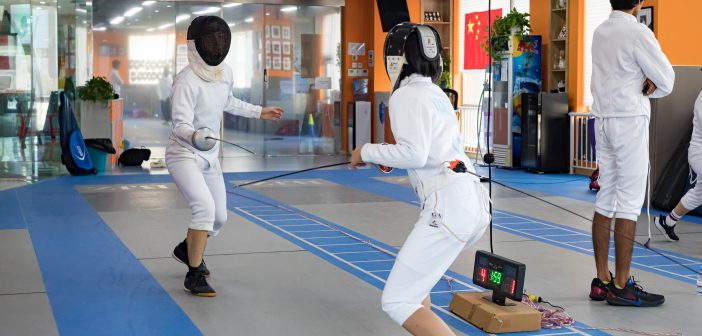Rasping and heavy, but regular and mechanical breath. Dark and threatening music. Lightsabers flashing – one blue, one red. And the fight begins – we all know the scenes (and if you don’t, then go and watch Star Wars immediately). In popular culture, swordfighting has always been an effective way to catch the audience’s interest. There are many examples of it being incorporated into well-known stories – Star Wars, Pirates of the Caribbean, Lord of the Rings, Zorro, and The Three Musketeers, just to name a few.
In movies, though, fencing tends to be a lot more dramatic and theatrical than the Olympic sport actually is.
 Fencing has a long history: It started out as a method of combat and murder in wars and in duels – the earliest evidence of swordfight is a relief in Egypt from about 1190 BC – and slowly evolved into a sport with a strict set of rules that is part of the Olympic Games since its revival in 1896.
Fencing has a long history: It started out as a method of combat and murder in wars and in duels – the earliest evidence of swordfight is a relief in Egypt from about 1190 BC – and slowly evolved into a sport with a strict set of rules that is part of the Olympic Games since its revival in 1896.
There are three types of weapons in modern fencing: épée, foil, and saber. The basic rules are the same in all three disciplines, but there are some differences: The main goal in fencing is to score more points than your opponent in a predetermined amount of time by touching your enemy with the pressure-sensitive tip of the blade (épée and foil) or hitting your adversary with any part of the blade (saber). In foil and saber, though, there are further restrictions: While you are allowed to hit your opponent anywhere on the body in épée, you can only score a point by hitting the torso in foil and hitting above the waist in saber.
A match ends when one fencer reaches a predetermined number of points (usually five, ten or fifteen) or when certain amount of time is over (usually one, two or three times three minutes).
 Timur Paulouski, a former member of the Belarussian national fencing team, and currently fencing coach in Beijing, describes the sport like this:
Timur Paulouski, a former member of the Belarussian national fencing team, and currently fencing coach in Beijing, describes the sport like this:
“It is a form of combat that requires a lot of coordination. In fencing, for example, you use one arm a lot and don’t use the other one at all. This is quite difficult. I also often compare fencing to chess, but instead of moving pieces, you move your body: If you can’t think, you won’t win.”
Paulouski first got into fencing in third grade, but then dropped it again. “I tried so many sports: wrestling, football, athletics, everything, and then, after five years, I came back to fencing and unlike the other sports, I really enjoyed it. So, I decided that I wanted to continue.”
He did so very successfully and became a member of the Belarussian national fencing team.
When asked about the top moments of his fencing career, Paulouski told us how he once beat an Olympic Gold Medalist in the European Championship. “To be honest, I didn’t believe that I could do it. But I did beat him – this was a great moment in my fencing career. Talking about my time as a coach, the best thing was when one of my students fenced very well in the European Championship. He lost in the quarter finals – it was a psychological problem – but later, in another competition, he beat the same guy. That was also a very important moment for me.”
This example underlines that you shouldn’t underestimate the mental aspect of fencing. Unlike team sports, for example football or basketball, you are on your own while you are fencing – there is nobody to help you out in a difficult situation, which is a challenge that can help you grow as a person.
 Might fencing be the right sport for you?
Might fencing be the right sport for you?
“Fencing is a sport that everybody can try”, Paulouski says. “But you need to be careful. I can’t teach everyone the same. Take a six-year-old and a thirty-year-old, for example, that’s a whole different teaching and learning process. And I can’t make everyone a master of fencing, of course, but it is my responsibility that all of my students enjoy the sport. So definitely, everyone can try it out.”
Fencing is a sport that a lot of people don’t know much about, and popular culture does in fact present a distorted image of it: Fencing is not like in Star Wars – while watching movies you always have to remember that the director wants to keep the audience on the edge of their seats, but real fencing is just too economical and not dramatic enough for that purpose. That doesn’t make fencing less interesting, though, it just means that you have to use your mind rather than rattle your sword – or wave your lightsaber – theatrically.
Images: Uni You
 This article appeared in the jingkids 2022 Teen Takeover issue
This article appeared in the jingkids 2022 Teen Takeover issue




